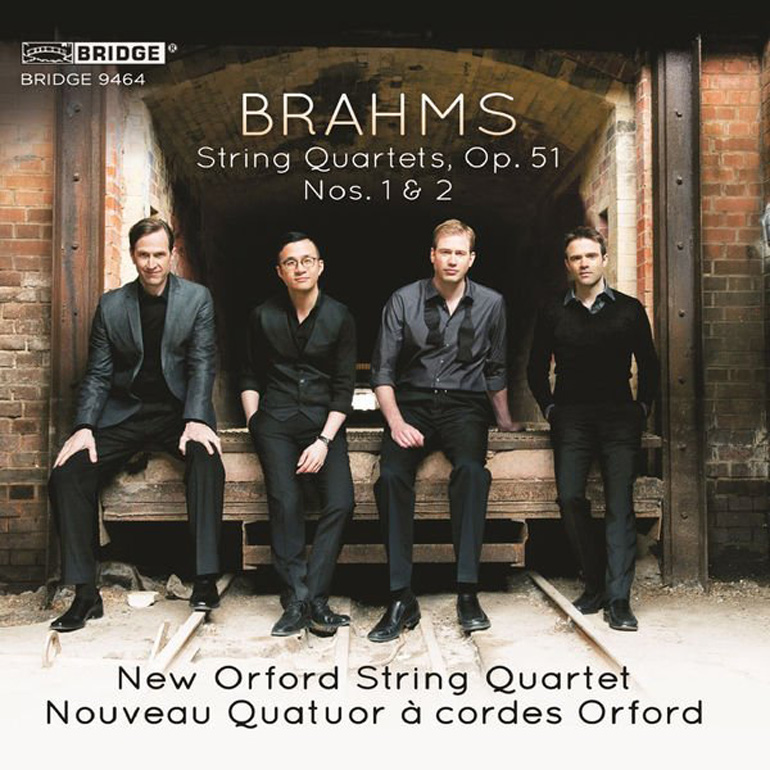Brahms String Quartets, Op. 51 Nos 1 & 2. New Orford String Quartet. Bridge 9464. Total time: 68 minutes.

It takes guts and determination to put together an album of the first two string quartets Johannes Brahms completed and dared to take to his publisher. The Op. 51 quartets are cornerstones of the canon and, as such, have been recorded by every major professional string quartet, and played and studied by every string student interested in the chamber music repertoire.
This music has been compelling fresh ears for nearly a century-and-a-half and, fortunately for anyone fond of Brahms’ compositions, the New Orford Quartet has put together an equally compelling case for their own interpretations.
This ensemble is a phenomenon in itself: violinists Jonathan Crow and Andrew Wan are concertmasters of the Toronto Symphony Orchestra and Montreal Symphony Orchestra, respectively; violist Eric Nowlin is associate principal viola in Toronto and cellist Brian Manker is principal cello in Montreal. These are busy musicians with plenty of responsibilities associated with their full-time jobs. Yet they have found the time to come together to create some golden live performances and recordings.
The ensemble’s début album, featuring the music of Schubert and Beethoven, was nothing short of inspired. This album of Brahms is just as powerful.
The biggest challenge most artists face in interpreting Brahms is in balancing the highly detailed counterpoint that ties the voices together against giving the music a larger sense of shape and momentum. Some ensembles play it a bit faster, so as to tie everything together with speed rather than finesse. Some ensembles overemphasize the inner voices to highlight textures; others focus on the main musical motifs and lose some of what is happening in the middle of the score.
The New Orfords manage to strike the wafer-thin balance between all of these competing demands: close your eyes during any movement, and you can clearly focus on the viola, the cello or one of the violins – but nowhere is the effect busy. The balance serves the forward momentum of the music as much as the texture of each measure and beat.
Despite the carefully honed interpretation, the result feels warm and very much in-the-moment. This is not just an intellectual exercise, as some of the colder interpretations of these quartets can be.
This kind of brilliant playing would be enough of an accomplishment from groups like the Takacs or the Emerson quartets, which have been around for years. But we get it here from four people who only get to play together during their free time, when they can arrange to be in the same city at the same time.
That’s very impressive and speaks eloquently of each artist’s abilities and willingness to listen as well as play.
For the rest of us humans, the New Orford has handed us a polished silver platter laden with musical nuggets that can be savoured over and over again, with something new and wonderful to discover with each new listen.
Here’s a link to a video of the New Orford playing the second movement of Op. 51, No. 1:
New Orford String Quartet/Brahms String Quartets is available for purchase via Amazon.com or iTunes.
#LUDWIGVAN
Want more updates on Toronto-centric classical music news and review before anyone else finds out? Get our exclusive newsletter here and follow us on Facebook for all the latest.
- Classical Music 101: What Does A Conductor Do? - June 17, 2019
- Classical Music 101 | What Does Period Instrument Mean? - May 6, 2019
- CLASSICAL MUSIC 101 | What Does It Mean To Be In Tune? - April 23, 2019



